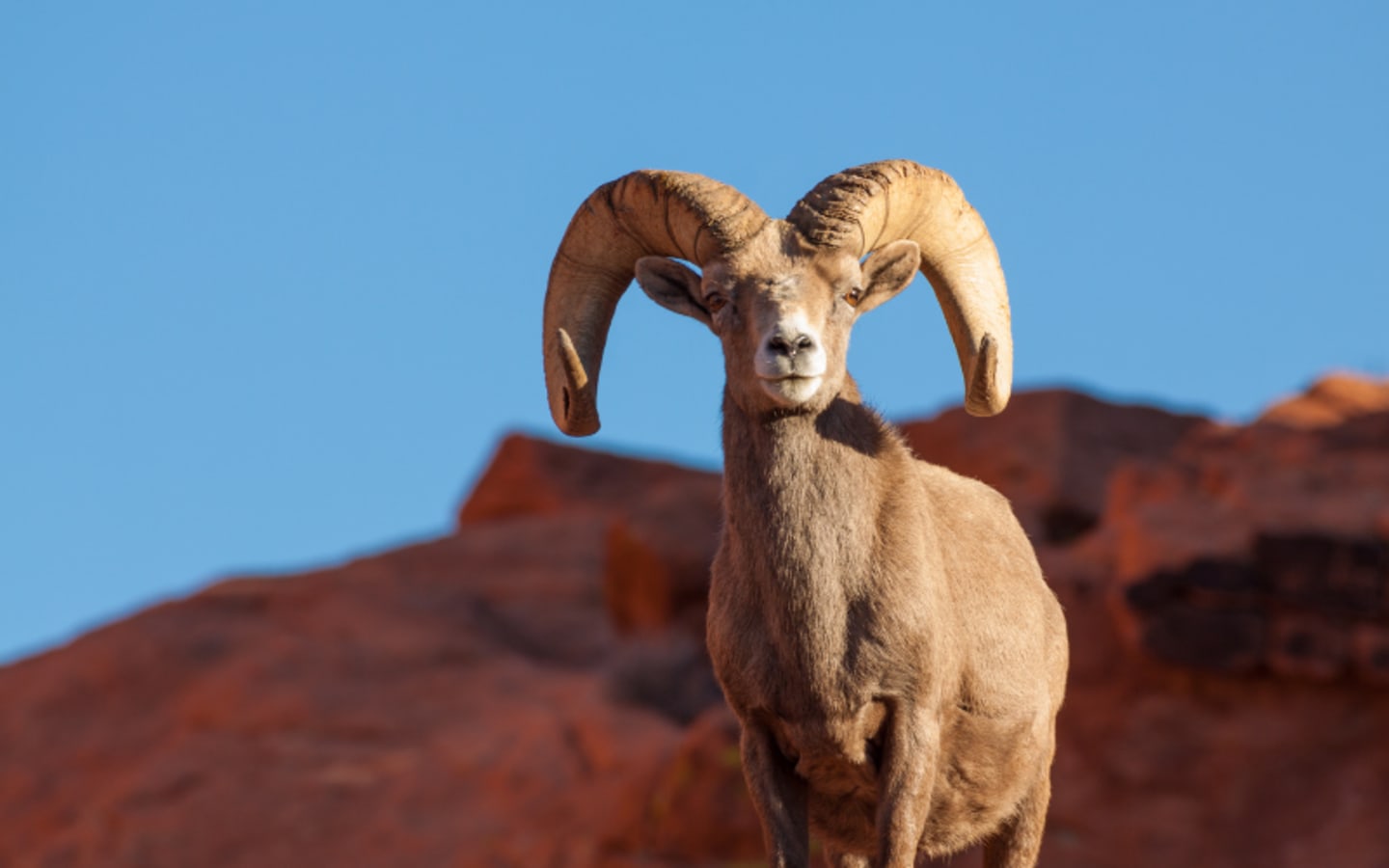In the rugged deserts of the Las Vegas Valley, a crisis unfolded in early 2025 that threatened the survival of the desert bighorn sheep. A brutal drought, stretching over 200 days without measurable rain, had left the landscape barren, stripping away the sparse vegetation these resilient animals depend on. The Nevada Department of Wildlife (NDOW) faced a tough reality: without action, hundreds of these iconic creatures could perish. But thanks to a remarkable collaboration between wildlife experts, hunters, and conservation groups, a bold plan to save the bighorn sheep not only preserved a struggling population but also set a powerful example of what teamwork can achieve.
The desert bighorn sheep, known scientifically as Ovis canadensis nelsoni, is built for survival in Nevada’s harsh, arid terrain. With their incredible ability to thrive in areas with little water or vegetation, these animals are a symbol of resilience. But even they have limits. In 2021, about 1,000 bighorn sheep roamed the Las Vegas Valley region. By 2023, that number had dropped to 880 due to prolonged drought. A September 2024 aerial survey delivered grim news: only 442 sheep remained. The combination of no rain and dwindling food sources was pushing the herd toward collapse.
Historically, bighorn sheep faced even greater challenges. In the early 1800s, an estimated 1.5 to 2 million bighorn sheep roamed from Canada to northern Mexico. By the early 1900s, their numbers had crashed to just 15,000–25,000, decimated by unregulated hunting, habitat loss from westward expansion, and diseases spread by domesticated sheep. Conservation efforts began to take shape in the 1930s and gained momentum through the 1950s. By the 1970s and 1980s, hunter-led groups like the Wild Sheep Foundation and Nevada Bighorns Unlimited stepped up, forming partnerships that became critical to saving the species.
In March 2025, NDOW gathered to finalize a rescue plan for the Las Vegas Valley herd. The solution was translocation—permanently moving 150 sheep to new locations to ease the strain on their drought-ravaged habitat. This wasn’t a simple relocation, where animals might temporarily move within their region to escape tough conditions. Translocation meant carefully selecting new homes where the sheep could thrive long-term, either by joining existing herds or establishing new ones. The plan required serious funding and coordination, and that’s where the teamwork kicked into high gear.
NDOW committed $500,000 to cover emergency water deliveries and the translocation effort. Outdoor gear company Kuiu, inspired by the rugged spirit of Alaska’s Kuiu Nation, teamed up with the Grand Slam Club/Ovis to contribute $250,000. Then, the Fraternity of the Desert Bighorn, Nevada Bighorns Unlimited, and the Wild Sheep Foundation each pledged $100,000, bringing the total budget to $1.05 million. This kind of collaboration—between a state agency, a business rooted in hunting culture, and conservation groups filled with passionate hunters—showed how shared goals can make a real difference.
The translocation process was no small feat. Because the Las Vegas Valley herd was free of disease, biologists had to choose destinations carefully to avoid exposing the sheep to pneumonia, a common threat in other herds. One-third of the sheep—50 animals—were moved to a fenced-in nursery herd about 60 miles northwest of Salt Lake City. This herd serves as a source for future translocations, helping to rebuild populations across Utah’s traditional ranges. Another 50 sheep were sent to the Cortez Mountains, 70 miles southwest of Elko in north-central Nevada, where they would establish a new herd in an area bighorns historically roamed. The final group went to the Tobin Mountain range south of Winnemucca, Nevada. Although some disease was present in that herd, it wasn’t contagious to young sheep, making it a safe choice.
The process itself was intense. Biologists and handlers sedated the sheep, fitted them with collars, took blood samples, and blindfolded them to reduce stress during the airlift. Helicopters carried the animals to their new homes, a journey that was physically and logistically demanding. Tragically, one sheep didn’t survive the airlift, likely due to the combination of extreme heat, limited resources, and the stress of the move. While such losses are rare, the crew felt the weight of it. Still, the operation was a success, relieving pressure on the original herd and giving the translocated sheep a chance to thrive in healthier environments.
This wasn’t the first time such an effort saved bighorn sheep. In 2021, a pneumonia outbreak devastated the herd on Utah’s Antelope Island. Because even healthy sheep could carry the disease, the entire herd had to be culled. But the same groups that stepped up in Nevada—NDOW, hunter-led organizations, and conservationists—worked together to restore the population. That herd now serves as a nursery for other translocations, much like the one near Salt Lake City. These efforts show how lessons learned from past challenges can fuel future successes.
What makes this story stand out is the partnership behind it. Hunters, often misunderstood, played a huge role through their funding and advocacy. Groups like the Wild Sheep Foundation and Nevada Bighorns Unlimited aren’t just about the thrill of the chase—they’re about ensuring wildlife thrives for generations. The money they raised, combined with NDOW’s expertise and Kuiu’s support, turned a dire situation into a win for conservation. The bighorn sheep aren’t just surviving; they’re being given a chance to repopulate historic ranges and inspire awe in the wild.
The desert bighorn sheep’s story is one of grit and hope. It’s about people coming together—biologists, hunters, business owners, and conservationists—to protect a species that represents the untamed spirit of the American West. As the sheep settle into their new homes, their survival stands as a testament to what’s possible when passion and purpose unite. Whether seen scaling a rocky cliff or grazing in a remote valley, these animals remind us why preserving the wild is worth every effort.





